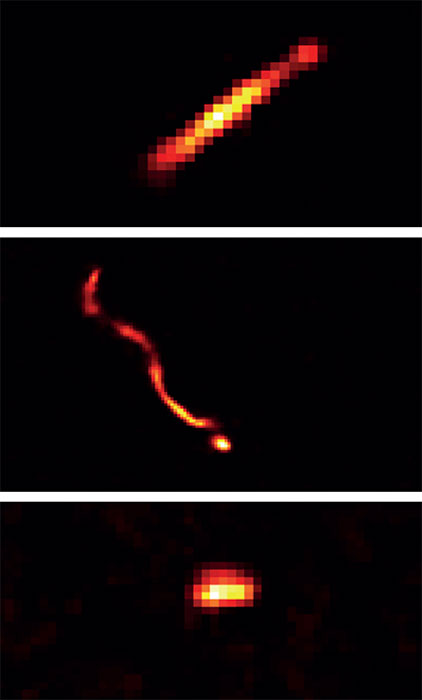
Image credit: DECO.
Launched in 2014, the Distributed Electronic Cosmic-ray Observatory (DECO) enables Android smartphone cameras to detect cosmic rays. In response to the increasing number of events being recorded, however, the DECO team has developed a new machine-learning analysis that classifies 96% of events correctly.
Similar to detectors used in high-energy physics experiments, the semiconductors in smartphone camera sensors detect ionising radiation when charged particles traverse the depleted region of their sensor. The DECO app can spot three distinct types of charged-particle events: tracks, worms and spots (see image). Each event can be caused by a variety of particle interactions, from cosmic rays to alpha particles, and a handful of events can be expected every 24 hours or so.
These events have so far been classified by the users themselves, but the increasing number of images being collected meant there was a need for a more reliable computerised classification system. Due to the technological variations of smartphones and the orientation of the sensor when a cosmic ray strikes, traditional algorithms would have struggled to classify events.
The DECO team used advances in machine learning similar to those widely used in high-energy physics to design several deep neural-network architectures to classify the images. The best performing design, which contained over 14 million learnable parameters and was trained with 3.6 million images, correctly sorted 96% of 100 independent images. An iOS version of DECO is currently in the beta stage and is expected to be released within the next year.








